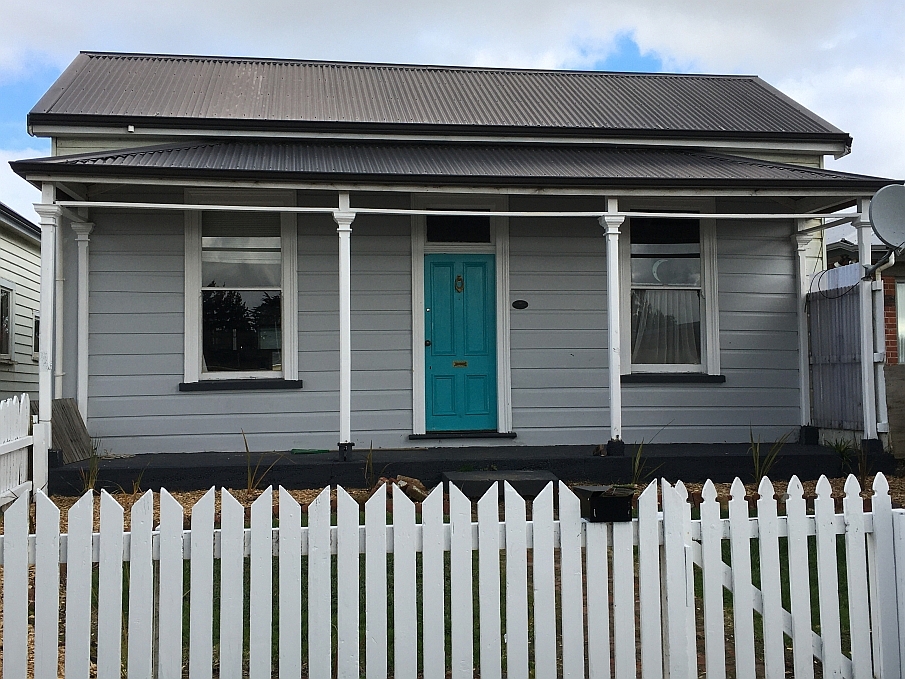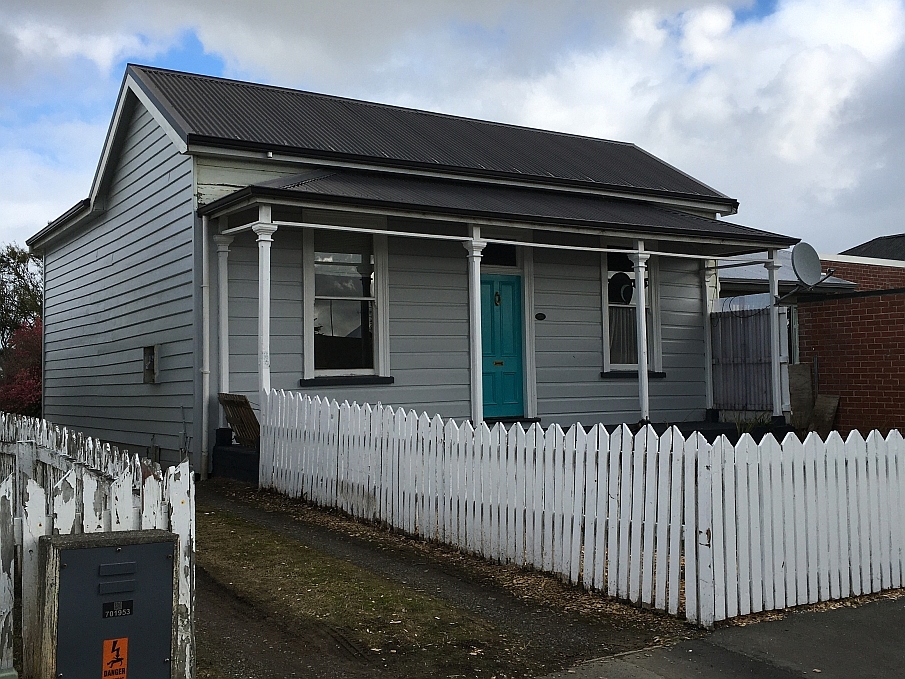Two timber worker’s houses sit side by side on Leet Street in Invercargill. The pair of cottages is thought to have been built just prior to 1890 and each has historical and architectural significance because of their association with a notable local family and as characteristic examples of modest dwellings of this period. The section on which the houses are built is just beyond the northern boundary of the settlement of Invercargill, as originally surveyed in the 1850s. Further town blocks, to the north of Spey Street, were formally laid out by the end of that decade. Leet Street appears on survey plans from this period. The earliest available reference for ownership of Section 7, Block LX Town of Invercargill is in the form of Records of Title from the 1860s onwards, which vested ownership in the Borough Council of Invercargill and its successors. They retained the property for much of the twentieth century and leased it out as a town section. The earliest note of the cottages was from April 1890, when Alfred Tapper sold a portion of his estate, including his leasehold of Section 7 Block LX. An advertisement describes the ‘1/4-acre leasehold, with two 5-roomed cottages, nearly, Ground rent, £6 per annum’. The Tapper family (parents Robert and Elizabeth and their four sons – Robert, Charles, George, and Alfred) had settled at ‘The Narrows’ in Longwood near Riverton, about 45kms from Invercargill. Robert (junior) was a merchant and ironmonger in Invercargill from the mid-1860s, and also opened a branch in Dunedin. In 1876, he took his brother Alfred into the partnership. Trading as R. & A. Tapper Bros, they ran a sawmill at Longbush and had timber yards in Dee Street, Invercargill. They stocked flooring, linings, shelving, skirting, architraves, mouldings and general building timber. It is likely that Alfred built the two cottages, given these business interests and his lease of the land. Alfred was also Mayor of Invercargill in the late 1880s. In 1911, a separate title was issued for Section 7. Elizabeth Tapper was noted as the leaseholder. She transferred the lease to William Varcoe in 1924. Often the cottages were leased separately and there were many leaseholders in the twentieth century. It was not until 1996 that the property became freehold, with the cottages being sold together on a single title. The cottages have remained on a single title since their construction and form a unified pair, which is an increasingly rare grouping because such modest dwellings are often demolished. The cottages are typical nineteenth century form. Each is F-shaped in plan with a single gable and symmetrical façade facing Leet Street, transected by two parallel gabled sections at the rear. Built of timber and clad in weatherboard each house has a verandah and central door flanked by double-hung sash windows. In 2020, they remain private residences.



Location
List Entry Information
Overview
Detailed List Entry
Status
Listed
List Entry Status
Historic Place Category 2
Access
Private/No Public Access
List Number
2484
Date Entered
11th November 1983
Date of Effect
11th November 1983
City/District Council
Invercargill City
Region
Southland Region
Extent of List Entry
Extent includes part of the land described as Sec 7 Blk LX Town of Invercargill (RT SL1A/238), Southland Land District, and the House at 133 Leet Street, Invercargill, thereon. Refer to the extent map tabled at the Heritage List/ Rārangi Kōrero Committee meeting on 4 June 2020.
Legal description
Sec 7 Blk LX Town of Invercargill (RT SL1A/238), Southland Land District
Stay up to date with Heritage this month
